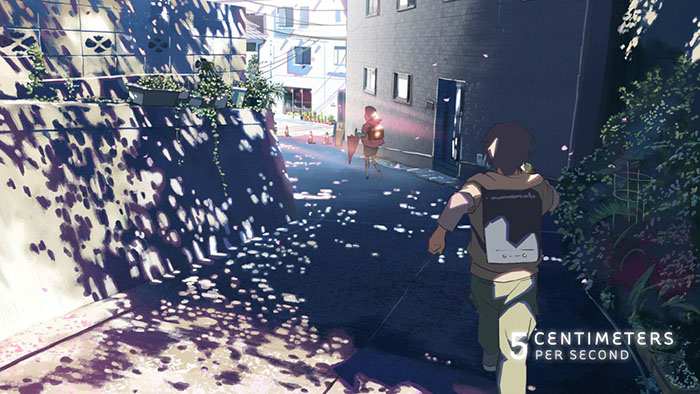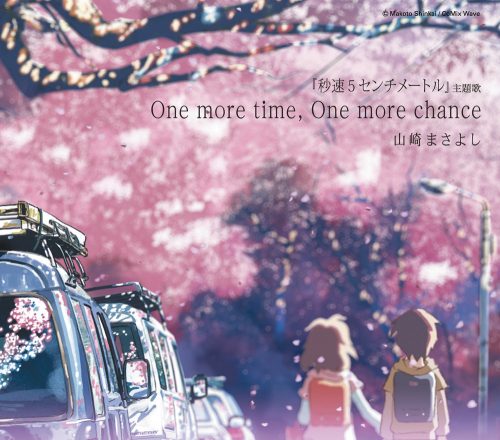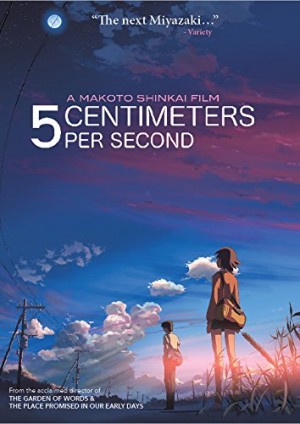
5 Centimeters Per Second (Byousoku 5 Centimeter) is a film about a burning romance slowly growing cold. It is a story told in three parts, each alluding to the titular theme. The speed a sakura petal falls is the same speed hearts grow apart.
This is one of Makoto Shikai’s iconic films, his involvement telling its own story: Original Creator, Art Director, Sound Director, Color Design, Director of Photography, Storyboard, Episode Director, and of course, Director.
To say the least, when people think of Makoto Shinkai films, this is a standout example. 5 Centimeters Per Second deals with Shinkai’s recurring theme of distance. However, this time, the context is a childhood romance that doesn’t blossom but withers.
In this article, I want to briefly discuss Japan’s relationship with cherry blossoms and spring. By doing so, I hope to give readers insight into how Makoto Shinkai implies the film’s ending while connecting cultural ideas into the story.
Context before Contrast: Spring and the Image of a Cherry Blossom
If spring is the season where love blooms, then it’s apt that the film frames its romance like a flower, growing alongside cherry blossom trees. These sakura trees, as they’re known in Japan, have cultural and religious significance.
Every April, gatherings are held to celebrate the coming of spring in the form of Hanami, the cherry blossom festival. This annual event is honored with food and drinks as groups observe the transience of beauty and the inevitability of its passing.
Cherry blossoms are short-lived. After blooming, it takes only 2 weeks before their petals start to fall. Blooming in one season, then disappearing in the next makes it an apt metaphor for mortality, linking it to Buddhist themes and artistic imagery in Japan.
Hanami is thus a celebration of the present. It embodies the Buddhist philosophy of mindfulness, the practice of being aware of the current moment, trained through meditation. To take in the moment, to appreciate the beauty surrounding oneself, is honoring both life and death.
Historically, this is also why samurai were linked to cherry blossoms. To honor their moral code, they must not fear death. Fraught with conflict, their lives were also short-lived, making a connection that fits their floral counterparts.
With this context, it’s now easier to understand why 5 Centimeters Per Second makes a direct connection to cherry blossoms. The transient beauty of the film is captured in its fleeting romance and tragic ending.
Early Movie Framing: Setting Up Visual Themes
The film frames its start distinctly. In the very first shot, we see a puddle. In its reflection, a sakura tree slowly loses its petals. As scenery is established, Akari starts a conversation about something she heard; “The speed at which cherry blossoms fall. It’s five centimeters per second.”
To which Takaki responds, “You sure know a lot of stuff like that, Akari.” Takai doesn’t delve much further. He doesn’t take a long time to consider what the film’s titular message is about, a point that gets capitalize further.
As the characters proceed down streets, they arrive at the train tracks. Divided by the oncoming train, Akari spins in anticipation, her pink umbrella, fitting perfectly with the falling petals. She states a wish that next year, it’d be great if they could watch the blossoms fall again. As the train passes by, it blocks our vision, and the shot fades to white, giving us the name of the first chapter: The Chosen Cherry Blossoms.
From this point forward, the director wants to work with this relationship. Just as the opening is framed by petals falling, their beauty captured in their last moments, this couple will embody the same transient beauty, blossoming in their youth, but slowly growing apart, 5 centimeters a second.
More Winter than Spring: First Signs of Distance and Adversity
Spring is a fleeting season, appearing only in memories and a brief few moments at the film’s beginning and end. In contrast, the time characters spend in Winter (chapter 1 and 3) and Summer (chapter 2) is far longer.
The tragedy of this film is love is just as fleeting. After the opening sequence, a series of events plague our main couple. Each character is separated, moving to different towns and schools. When each character decides to meet the other, the distance proves daunting, forcing Takaki to make many transfers from train to train.
As he transfers from one train to the next, he recalls a moment he deeply regrets. Before Akari transferred schools, she calls him one night, giving him the bad news. From this conversation, we learn that Akari had planned to go to the same middle school as him.
However, to do so would require her to live in her aunt’s house. Her parents, instead, handled the paperwork for her to go to a different school—placing her farther away from Takaki. As she explains, the camera shifts to her view, a tear dropping onto her shoe. Before she can continue, Takaki cuts her off.
“I understand… you don’t have to say anything else.” The camera shifts to him, his face obscured, then back to her. She’s taken aback by his response, a gasp visualized by her warm breath. He finishes, saying, “That’s enough.” Instead of comforting her, he chooses to cut her off. He can’t bear the truth—a recurring fact throughout the film.
An unbearable silence falls between them, and as a car passes in the background, Akari apologizes once more. Cutting back to the train, Takaki rationalizes the past. That even though Akari’s pain was apparent, “there was nothing I could do.”
As Takaki travels, getting closer, circumstances say otherwise. He loses the letter he’s meant to give to Akari. The wind carries it into the distance as if mocking him. When he’s finally on the last train, it freezes in the middle of its transit, forcing an already late Takaki to be even later.
There are circumstances out of each character’s control. At times, it’s cruel, with the world seemingly against them. However, despite these obstacles, this growing distance isn’t entirely out of their hands. Love can persist through such trials.
When Takaki arrives at the final train station, a part of him hopes Akari isn’t there. She would have waited for hours in the cold. As he walks towards the station, the light from a fire beckons him, and there, despite the uncaring world, rests Akari.
If the movie ended here, the message could be “love persists no matter the obstacle.” However, the movie moves forward against these sentiments. One night is all they have to share, and in this limited time, they walk towards a tree mentioned in Akari’s letters.
It’s here, that a bit of “magic” enters their frozen world. A bit of snow falls, transforming into a petal. Akari says a line from the opening, “Don’t you think it looks a little like snow?” The tree blossoms in the winter, and in this brief moment, they kiss, their love finally realized. It is here that all the effort feels worth it. It feels that this is a relationship that can last.
However, this chapter ends with a foreboding tone. As the morning rises, the train departs, and we see a lonely shot of Akari’s back. From this shot, we hear Takaki’s thoughts, “I never told Akari that I’d lost the letter...”
During this narration, Akari reaches into her bag. A pink letter addressed to Takaki is now in her hands. She looks at it as Takaki’s continues, “... Because I felt that my world had completely changed after that kiss.” Her expression is forlorn. As if she missed a moment that will never return.
Final Thoughts

5 Centimeters Per Second was a film that impacted my thoughts on romance. Even during my early childhood, I grew up watching Makoto Shinkai’s films, and to see myself writing on them now has been revelatory. While I’m unsure if I will continue further on this movie, my brief moment with it has given me a new perspective on Makoto Shinkai.
Recommended Post
6 Anime Like 5 Centimeters Per Second [Recommendations]
Recommended Post


